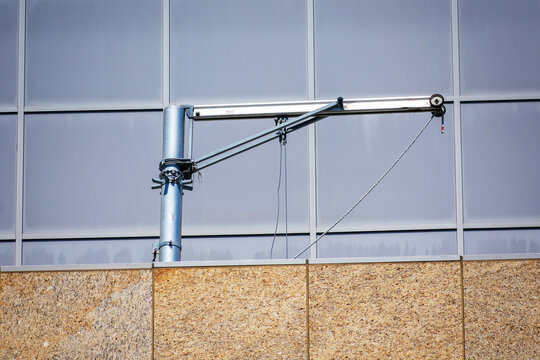Davit systems have long been a reliable solution for accessing building facades, essential for maintenance and construction tasks. In the Philippines, where high-rise buildings and challenging weather conditions are common, optimizing these systems is crucial for ensuring peak performance and safety. This guide explores how to maximize the efficiency and safety of Davit systems, taking into account local building regulations and environmental factors.
Understanding Davit Systems
Davit systems are pivotal in providing access to high and hard-to-reach areas on building facades. These systems typically include an aluminum alloy mast and jib, with the boom capable of rotating on a rolling collar, allowing platforms to maneuver over parapets. Davit systems can be categorized into permanent and temporary types, each serving specific needs. In the Philippines, they are commonly used for tasks like facade cleaning, repair, and installation of building features.
Key Factors to Consider for Optimization
Performance Efficiency: To achieve optimal performance, the correct installation of Davit systems is essential. Ensure that the system is installed by qualified professionals, following the manufacturer’s guidelines and local building codes. Regular maintenance and inspections are crucial to keeping the system in good working order. This includes checking for wear and tear, lubricating moving parts, and ensuring all components are functioning correctly. Proper calibration and adjustments will ensure smooth operation and extend the lifespan of the system.
Safety Measures: Safety is paramount when working with Davit systems. Adherence to EN1808 and North American standards ensures that the system meets stringent safety requirements. Using certified components and accessories reduces the risk of failure. Regular safety training for operators and maintenance staff is vital, ensuring they are familiar with the correct procedures and emergency protocols.
Enhancing Performance
System Design and Configuration: Optimizing the design and configuration of Davit system involves selecting the right dimensions and outreach based on the specific building requirements. Advanced software can assist in designing a system that meets the building’s needs while ensuring efficient operation.
Regular Upgrades and Maintenance: A routine maintenance schedule is essential for identifying and addressing potential issues before they become serious problems. This includes regular inspections, replacing worn parts, and updating components as necessary. Proactive maintenance helps in avoiding costly repairs and ensures that the system remains operational.
Integrating Advanced Features: To enhance performance, consider integrating advanced features such as traversing davits, which reduce the manual effort of relocating portable davits. Motorized trolleys and automated systems can further improve efficiency, making it easier to move and position the platform.
Ensuring Safety
Compliance with Standards: Compliance with EN1808 and the Machine Directive 2006/42/CEE ensures that the Davit system meets rigorous safety standards. Regular audits and checks should be conducted to ensure all components are in line with these regulations.
Risk Management: Identifying potential hazards and implementing risk mitigation strategies is crucial. Conduct regular safety audits and risk assessments to address any issues before they pose a threat.
Training and Certification: Providing comprehensive training for operators and maintenance personnel is essential. Ensure that all staff are familiar with safe operation practices and are certified according to industry standards.
Takeaway
Optimizing Davit systems involves a balance of performance efficiency and safety measures. By following best practices for installation, maintenance, and safety, building managers and maintenance teams in the Philippines can ensure their Davit systems operate at peak performance. Regular evaluations and upgrades will contribute to the longevity and effectiveness of these crucial access systems.

